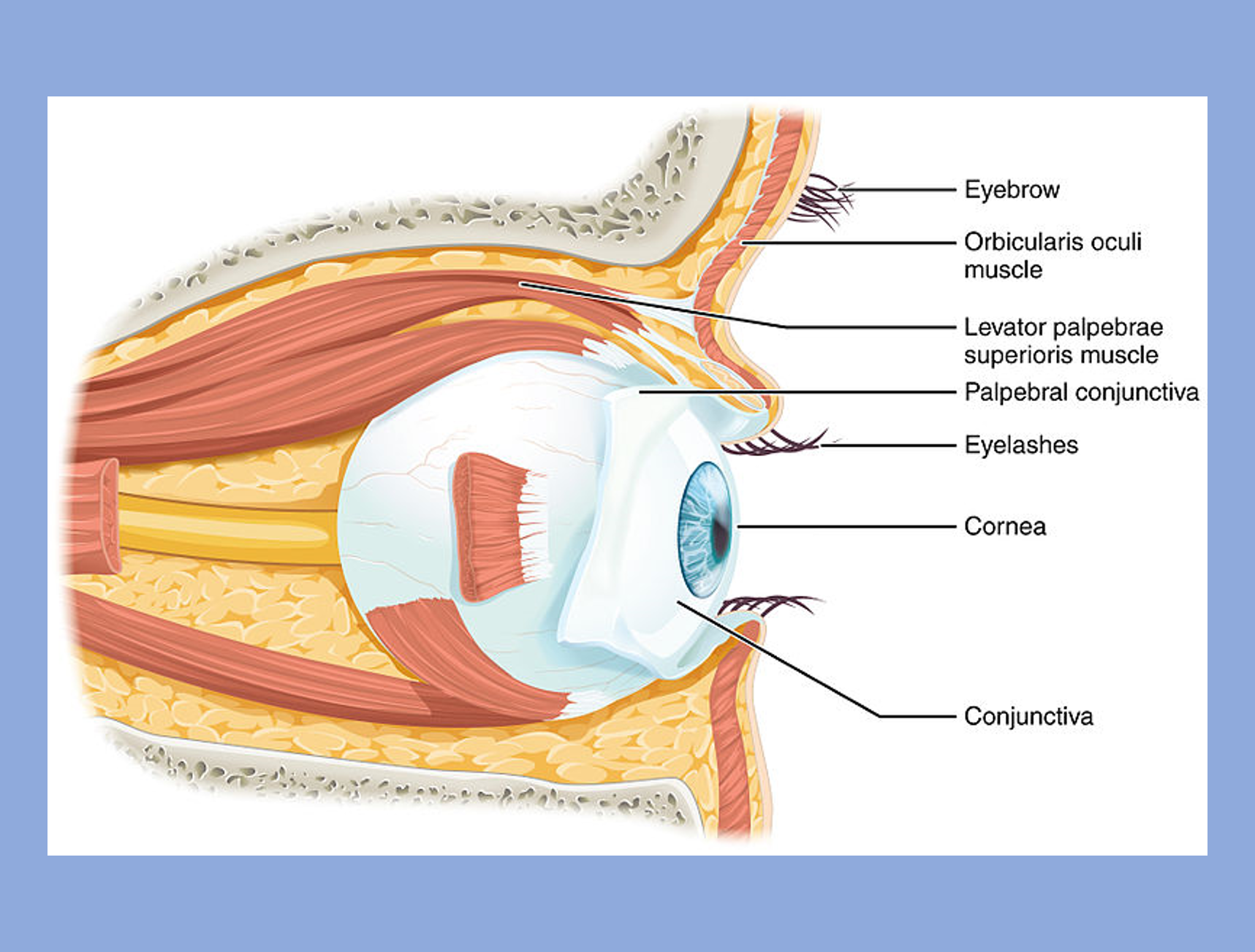Module 14: Sensory Systems
Section outline
-

Our nervous system must receive and process information to stay healthy and be safe. The sensory receptors receive the various types of stimuli and change into electrochemical signals, which are then carried into the CNS by neurons to inform us about the changes within the environment around us or the state of our internal environment.
The senses can be classified as either general or specific. A general sense is distributed throughout the body and has receptor cells within the structures of other organs. Mechanoreceptors in the skin, muscles, or the walls of blood vessels are examples of this type. General senses often contribute to the sense of touch, as described above, or to proprioception (body awareness) and kinesthesia (body movement), or to a visceral sense, which is most important to autonomic functions. A unique sense has a specific organ devoted to it: the eye(vision/sight), inner ear (hearing and balance/equilibrium), tongue(gustation/taste), or nose(olfaction/smell).
You would have an overview of information on general senses and look at the five different special senses, their functions, and associated organs.
("Eye in the Orbit" by Betts et al. is used with a CC BY 4.0 license.)
Upon completion of this module, you will be able to:- Describe the general and special senses and appropriate terminology related to senses (CLO #1 and #3)
- Describe the structure and function of the olfactory system (CLO #2, #3, and #4)
- Recognize the structure and functions of the external, middle, and inner ear (CLO #2, #3, and 4#).
- Explain the physiology of hearing, static and dynamic balance (CLO #2, #3, and #4).
- Identify the location and explain the function of each of the main components of the human eye (CLO #2, #3, and #4).
To achieve these objectives:
- Read the Module 14 Introduction. (CLO #1), (M.L.O. #1)
- Read Chapter 16 in the textbook. (C.L.O #1 & #4), (M.L.O. #1 & #5)
- Test Your Knowledge sections are located at the end of each segment in the chapter. Answering the questions in these sections will aid in your knowledge to help you with the course. These questions will be relevant for information on testing and quizzes (CLO#1,2 and 3), (MLO#1,3,4,5).
- Complete the exercises in the "Practice" section at the end of the chapter (CLO#1,2 and 3), (MLO#1,3,4,5).
- Complete the discussion activity (CLO#1 and 4), (MLO#2)
- Complete the quiz. (CLO#1,2 and 3), (MLO#1,3,4,5)
Module Pressbooks Resources and Activities
You will find the following resources and activities in this module at the Pressbooks website. Click on the links below to access or complete each item.
-
Read chapter, review the "Test Your Knowledge" questions, and complete the activities in the "Practice" section at the end of the chapter.
-
In the quiz below, prompts assess course learning outcomes #s 1-4 and module learning outcomes #s 1-5.
This quiz will have 10 questions. It is worth 20 points. You are allowed two attempts at this quiz. Correct answers will be available for review after the quiz is closed.
Directions for Instructors: Load questions from the Module 14 Question Bank.Set close date and then tick "Right answer" box under "After the quiz is closed" section of Review Options.
Background Colour
Font Face
Font Kerning
Font Size
Image Visibility
Letter Spacing
Line Height
Link Highlight
Text Colour
